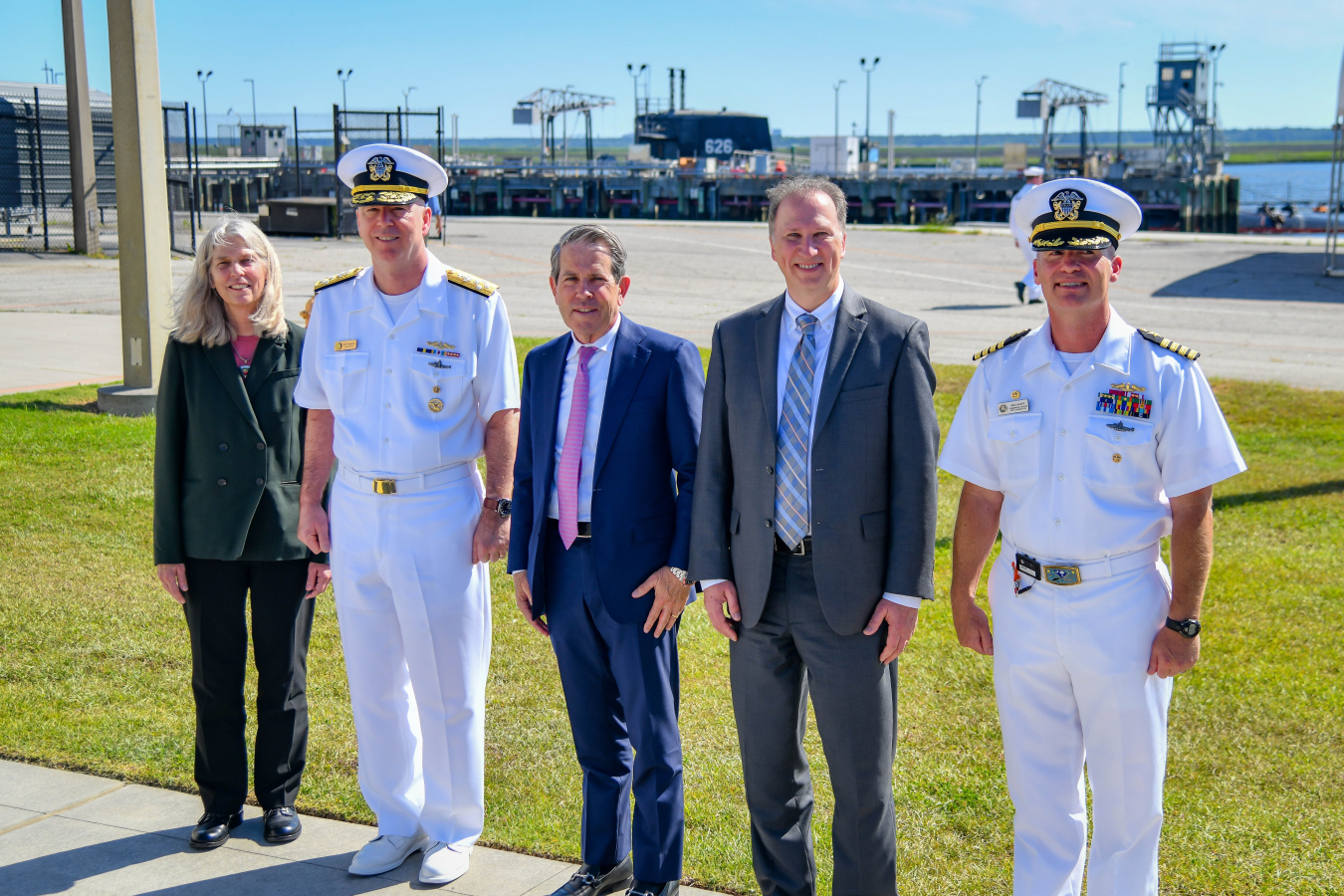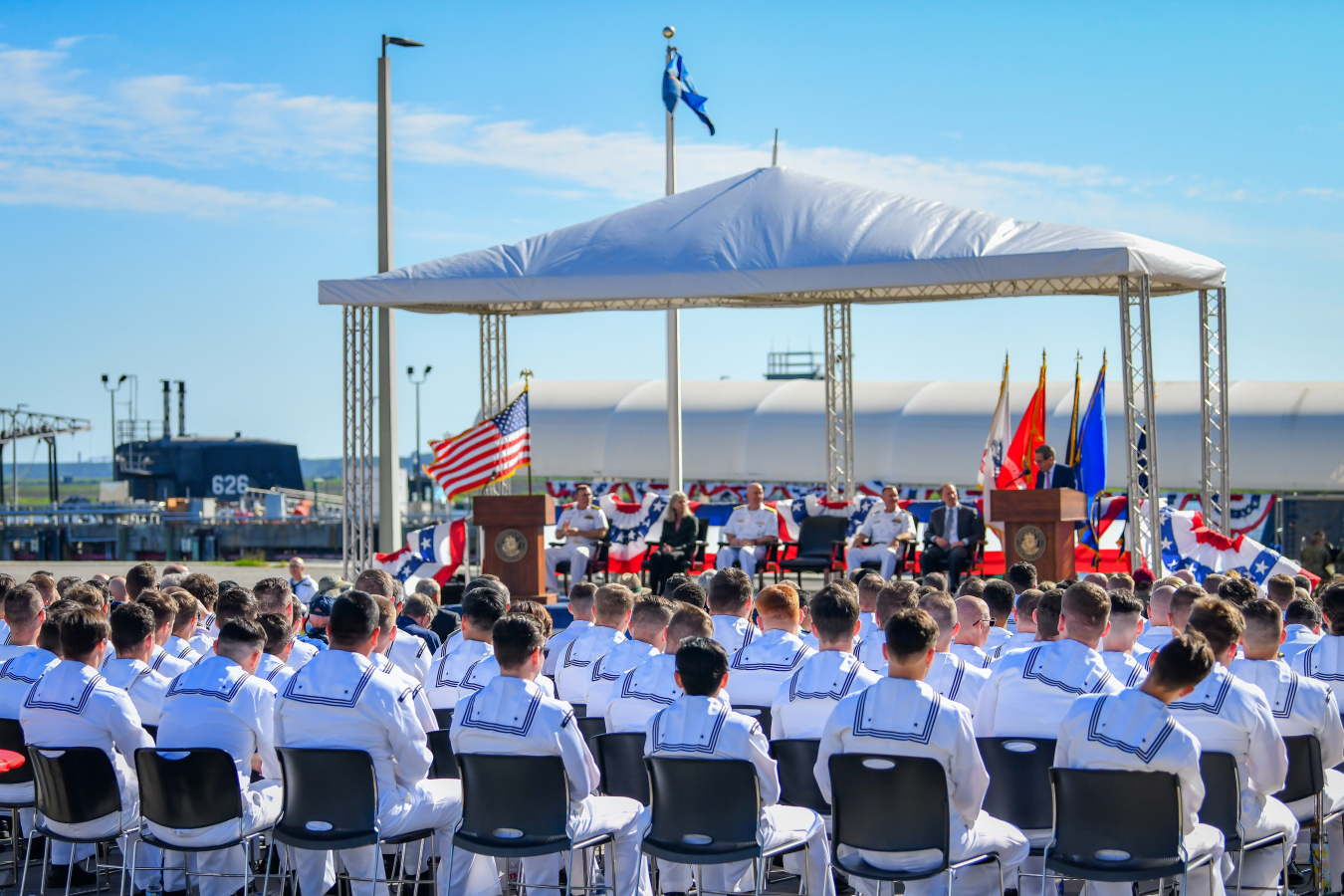NNSA Administrator Jill Hruby delivers remarks at the Naval Nuclear Propulsion Program 75th Anniversary Event at the Nuclear Power Training Unit in Charleston, South Carolina, May 30, 2024.
National Nuclear Security Administration
May 30, 2024
Good morning, everyone. It is my honor and pleasure to celebrate the 75th anniversary of the Naval Nuclear Propulsion Program with you. Thank you to Commanding Officer Koepp, Executive Officer Fitzpatrick, and Command Master Chief Montello for the opportunity to be with you today.
I also want to thank Rear Admiral McAneny, Mr. Sambolt, and the thousands of dedicated staff who support the Naval Reactors program. I particularly want to acknowledge and thank Admiral Houston for being a talented and dedicated leader for Naval Reactors, and an amazing partner with NNSA.
The NNSA and the U.S. Navy together provide fully trained U.S. Navy women and men with ships that excel in endurance, stealth, and speed – creating a warfighting advantage. The mission to provide military effective naval nuclear propulsion systems is one of NNSA’s founding pillars. The other pillars are associated with nuclear deterrence, both designing and producing weapons, and advancing nuclear nonproliferation. In my time as the NNSA Administrator, I have come to appreciate the advantages provided by having the nuclear deterrence mission and the naval reactors mission in the same organization. These missions have a lot in common.
Fundamentally, our missions involve managing the risks associated with nuclear materials to realize national security benefits. This requires the best minds and most disciplined operations of any work I can imagine. And although we stand on the shoulder of brilliant founding fathers – Oppenheimer and Rickover – we are trusted to improve what they started. And may I dare say, we are.
Naval Reactors has come a long way from the Nautilus’ first message, “Underway on nuclear power” in 1955. Today, more than half of the Navy’s major combatant ships are nuclear-powered, including 67 combat submarines and 11 aircraft carriers. These ships can travel farther and longer than ever before. A Virginia-class submarine today can travel more than 16 times farther than the Nautilus could without needing to refuel. The original S1W core could operate for 18 months without refueling. Impressively, the reactors for the coming Columbia-class submarines will have a life of ship core capable of operating for over 40 years, eliminating the need for refueling altogether.

Alongside its technological accomplishments, the Naval Nuclear Propulsion Program is dedicated to the safety of its ships and crew. Nuclear-powered ships and their reactors are designed to the most exacting standards, and crews receive years of training in theoretical knowledge and practical experience. And, of course, that initial training takes place right here in Charleston at the Nuclear Power Training Unit.
This commitment to rigorous training shows in the Program’s near flawless safety record. Since 1955, U.S. Navy nuclear-powered ships have steamed over 171 million miles, amassed over 7,400 reactor-years of operating experience, and have visited more than 150 ports in over 50 countries and dependencies. Rigorous requirements in reactor design and safety have also been implemented to minimize radiation exposure to personnel. No civilian or military member of the Program has ever exceeded the Federal lifetime radiation exposure limit or the Federal annual limit.
Finally, the Naval Nuclear Propulsion Program, in partnership with NNSA and the Department of Energy, is committed to responsible environmental stewardship in handling nuclear fuel. We maintain a “cradle to grave” responsibility for fuel in its delivery, use, and long-term storage. Since 1957, the Program has safely shipped 921 containers of spent fuel without injury to a member of the public or a release of radioactivity. Collectively, these containers have traveled over 1.7 million miles, or roughly 60 trips around the earth, without incident. We are looking forward to the completion of the Spent Fuel Handling Recapitalization Project at the Idaho National Lab, which will replace the 60-year-old Expended Core Facility and provide for the safe and secure long-term storage of spent nuclear fuel for decades to come.
I again want to thank the thousands of dedicated women and men here in Charleston and around the Naval Nuclear Propulsion Program for their tireless dedication and service. Our nation and the world are safer because of your work.


